Physical Address
304 North Cardinal St.
Dorchester Center, MA 02124
Physical Address
304 North Cardinal St.
Dorchester Center, MA 02124
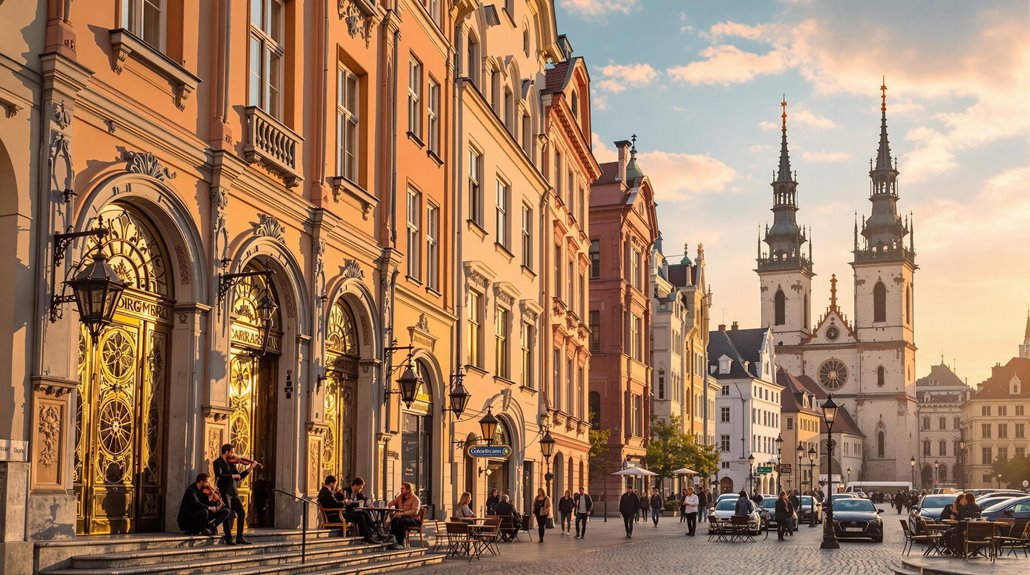
You will discover that Warsaw isn't just another European capital – it's a city that defies expectations at every turn. From its phoenix-like rise after WWII to its current status as Poland's cultural powerhouse, Warsaw offers a mix of experiences you won't find anywhere else. Whether you're drawn to historical landmarks or modern attractions, the city's contrasting elements create an intriguing tapestry that's worth exploring. Let's look at what makes Warsaw such a compelling destination.
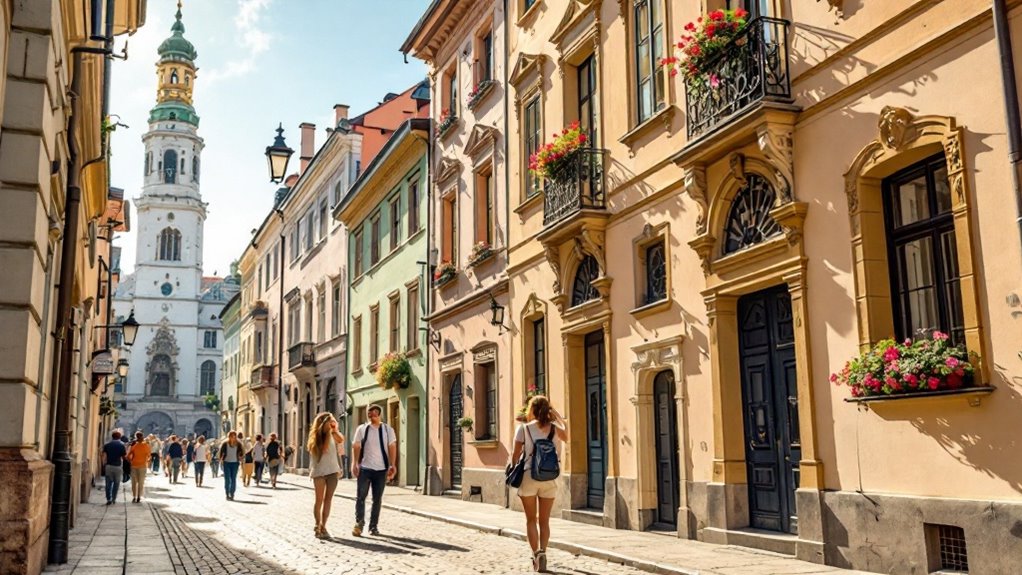
Warsaw's Old Town stands as one of history's most remarkable reconstruction achievements. After Nazi forces destroyed 90% of the district in WWII, a determined five-year campaign brought this historic center back to life using 18th-century records and paintings.
You'll find yourself wandering cobblestone streets that feel frozen in time, where original bricks salvaged from rubble now form the walls of faithfully restored buildings. The reconstruction effort was guided by a team of art historians and conservators who meticulously researched every detail.
Don't miss the Royal Castle, St. John's Archcathedral with its Gothic vaulting, or the lively Market Square lined with colorful townhouses. Look for QR codes on buildings to reveal audio guides that'll provide fascinating details about each site.
The free Wednesday entry to the Royal Castle is a bonus, where you can admire authentic Canaletto paintings that helped guide the reconstruction process.
While the Old Town showcases Warsaw's resilient spirit, the grandeur of Polish royalty truly comes alive at Wilanów Palace. This stunning Baroque residence, built for King Jan III Sobieski in the late 17th century, offers you a perfect blend of Polish, French, and Italian architectural styles. The palace holds special historical significance as it was the site of Sobieski's death.
Wilanów Palace stands as Warsaw's crown jewel, where magnificent Baroque architecture tells stories of Poland's majestic royal past.
You'll discover why it's nicknamed the "Polish Versailles" as you explore:
For just 20 zł, you can tour the palace's ornate interiors, or enjoy the gardens for 5 zł.
Pro tip: Visit on Thursdays for free admission, and take Bus 180 from central Warsaw for an easy 30-minute ride.
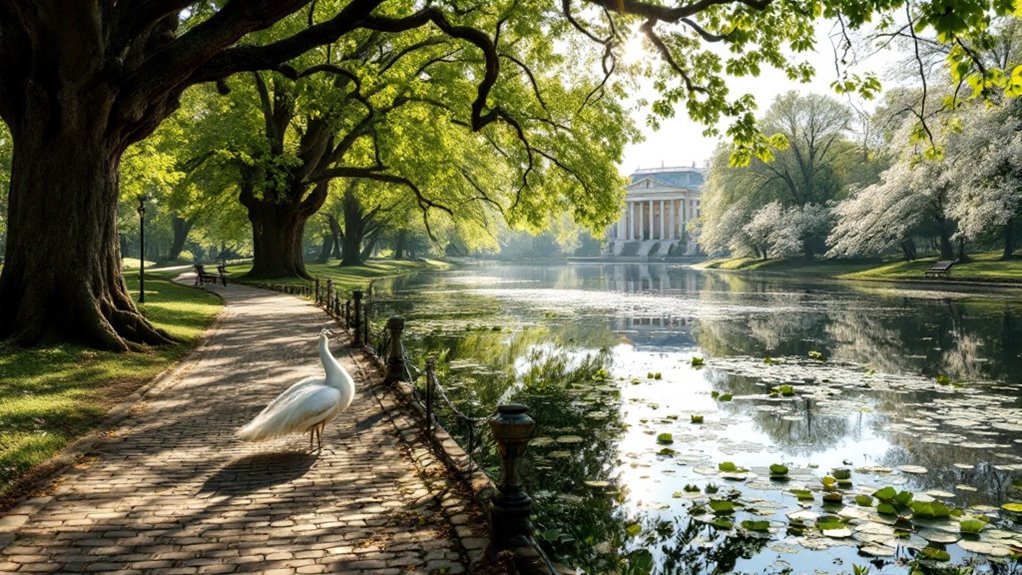
Nestled in the heart of Warsaw, Łazienki Park offers you a sprawling 76-hectare sanctuary where nature and architecture blend perfectly.
You'll encounter 21 distinct gardens and over 9,500 trees teeming with free-roaming peacocks and red squirrels.
At the park's center, you'll find the stunning Palace on the Isle reflected in a 22-hectare lake where swans glide gracefully.
Don't miss the iconic Chopin Monument under its willow tree or the hidden Temple of Diana for peaceful contemplation.
You can visit daily from 6:00 AM to 9:00 PM without paying an entrance fee.
Seven public transit lines make getting there easy, and two cafés provide perfect spots for refreshments.
For the full experience, grab an audio guide available in six languages and explore this UNESCO-recognized green oasis at your own pace.
Several nearby museums enhance your cultural journey through Warsaw's rich history.
The park's royal heritage dates back to the 17th century when it served as a summer residence for Polish kings.
From the peaceful gardens of Łazienki, you'll encounter a dramatic shift when approaching the towering Palace of Culture & Science. This 237-meter giant, built in 1955 as Stalin's "gift" to Poland, now stands as a fascinating mix of Soviet architecture and Polish artistic elements.
While it's stirred controversy as a symbol of communist rule, today's Palace offers unique experiences you won't want to miss. The building was constructed by 3,500 Soviet workers who dedicated their skills to creating this architectural masterpiece. Today, the area surrounding the Palace has become a hotspot for vegan dining spots, offering modern culinary experiences against this historic backdrop.
Love it or hate it, this architectural icon perfectly captures Warsaw's complex history while serving as a bustling cultural center in the modern city.
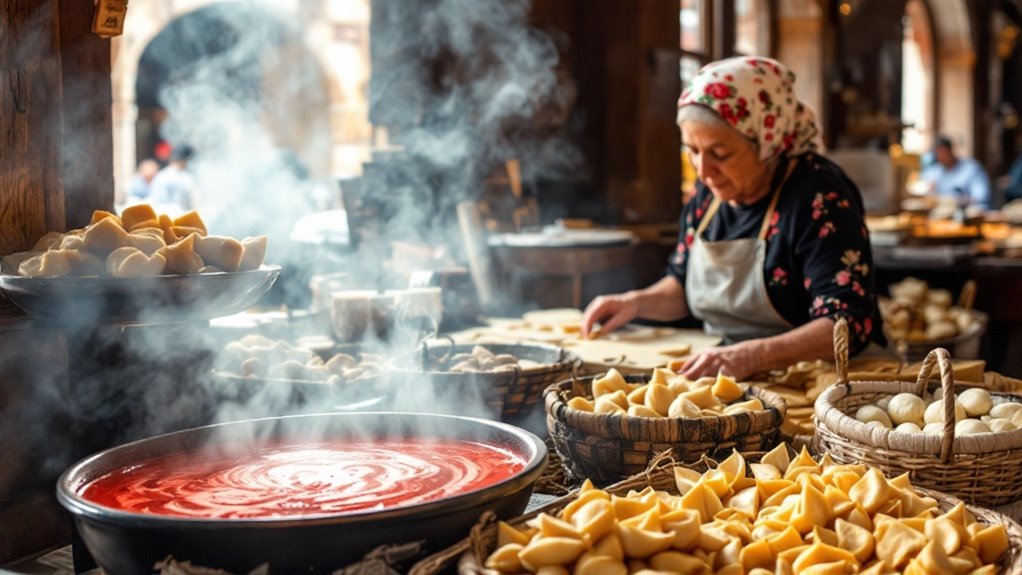
Looking to taste authentic Polish cuisine? Head to Warsaw's historic market halls like Hala Mirowska, where vendors offer fresh produce, homemade jams, and local delicacies.
You'll discover purple potatoes, wild blueberries, and traditional pierogi filled with meat, cheese, or mushrooms.
The market is open 7:00 a.m. to 8:00 p.m. on weekdays, giving you plenty of time to explore the stalls.
Don't miss Bazar Szembeka's barrels of pickled cucumbers and sauerkraut, or their artisanal breads made with rye and spelt.
Traditional Polish ferments and hearty breads await at Bazar Szembeka, where age-old recipes come alive in every jar and loaf.
Sample grilled kiełbasa sausages with mustard, and warm up with a hearty bowl of bigos hunter's stew.
For dessert, try pączki doughnuts or sernik cheesecake.
Visit during seasonal festivals for special treats like wild mushrooms in autumn or decorated pisanki eggs at Easter.
Remember to bring cash, as many vendors don't accept cards, and arrive before noon for the freshest picks.
After filling up on traditional Polish fare, you'll discover a walk it off along Warsaw's stunning Vistula riverfront.
The revitalized waterfront buzzes with energy from May through September, offering everything from multimedia fountain shows to sunset river cruises.
You can experience the Vistula's charm in several ways:
Named after the legendary Jan Karski, the bustling boulevard opened in 2015 with numerous cafes and restaurants lining the scenic walking path.
The riverfront seamlessly blends history with modern amenities.
Whether you're cycling the boulevards, picnicking in waterfront gardens, or photographing illuminated bridges at sunset, you'll discover the Vistula area captures Warsaw's lively spirit.
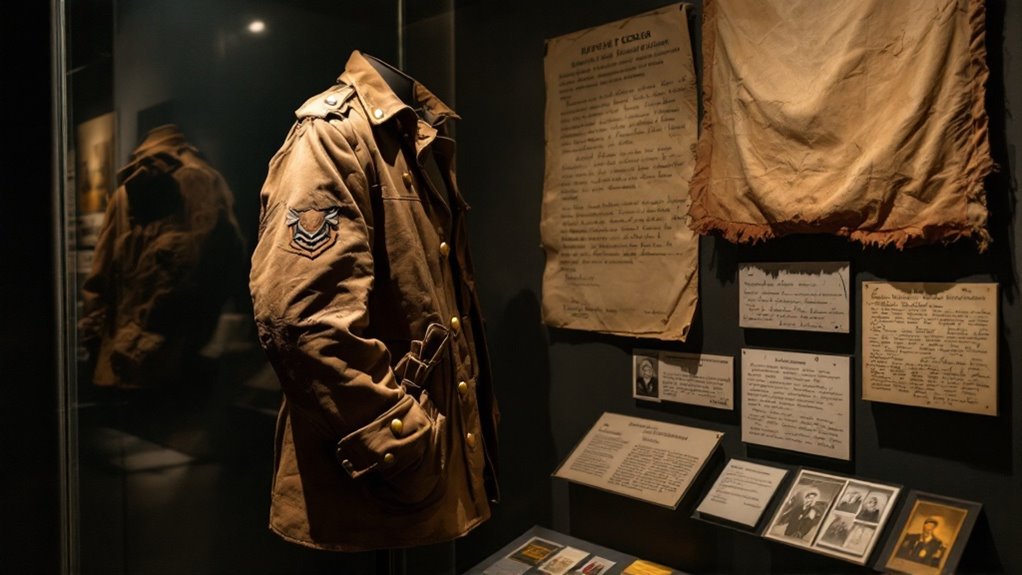
While Warsaw's modern spirit shines along the Vistula, you'll uncover the city's most moving stories at the Warsaw Uprising Museum. Inside this converted power station, you'll find over 800 original artifacts, from resistance armbands to weapons, that bring the 1944 uprising to life. The uprising began at W-hour at 17:00 on August 1st, launching Operation Tempest against Nazi occupiers.
Don't miss the immersive exhibits, including a walk-through replica of the city's sewer tunnels that fighters used to move secretly. The heartbeat-audio steel monument and panoramic battle films will transport you to those intense 63 days.
In the Little Insurgents Room, children's wartime drawings offer powerful glimpses into young lives disrupted by conflict.
Through 4,000+ survivor testimonies and personal items like love letters and diaries, you'll connect deeply with the ordinary people who fought extraordinary battles for Warsaw's freedom.
Warsaw's enchanting mix of history and music comes alive in its historic churches, where soaring architecture meets world-class classical performances.
Step into Warsaw's sacred spaces, where centuries-old churches transform into magnificent concert halls for sublime musical experiences.
You'll discover daily Chopin recitals in the intimate Fryderyk Concert Hall, complete with crystal chandeliers and complimentary sparkling wine during intermission.
Don't miss these musical highlights at Warsaw's churches:
These venues seamlessly blend Warsaw's architectural splendor with its rich musical heritage, making classical performances unforgettable. The Holy Trinity Churches represent a significant part of Catholic denomination heritage, with many historic locations across various cities preserving centuries of musical tradition.
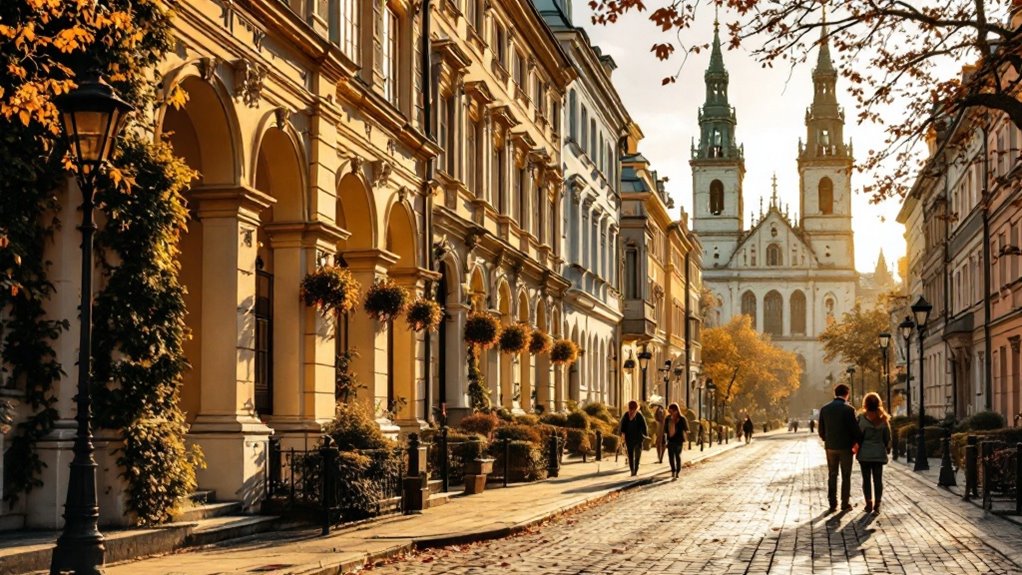
The majestic Royal Route stands as Warsaw's grandest historical thoroughfare, connecting three stunning former royal residences through the heart of the city.
You'll discover yourself walking in the footsteps of Polish monarchs as you explore architectural masterpieces like the reconstructed Royal Castle, with its Renaissance courtyards and Rembrandt collection.
Don't miss St. Anne's Church's tower for spectacular city views, or the Holy Cross Church, where Chopin's heart rests in a pillar.
The route showcases an impressive mix of styles, from the Baroque Presidential Palace to the intact Wilanów Palace with its beautiful gardens. The route originally developed in medieval times when it served as a crucial connection between Warsaw's key landmarks.
Keep an eye out for Sigismund's Column, Warsaw's oldest secular monument, and take time to admire the detailed post-WWII reconstruction work that earned this area its UNESCO status.
Once an industrial neighborhood, Praga District now stands at the forefront of Warsaw's modern culinary revolution.
Located on the eastern bank of Vistula, this historic area perfectly showcases the city's transformation from working-class roots to cultural prominence.
You'll discover chefs reimagining traditional Polish dishes with contemporary flair at spots like Boska Praga and hub.praga, where chef Witek Iwański transforms classic recipes into avant-garde masterpieces.
Don't miss these standout experiences in Praga:
Savor Praga's essential dining spots, where traditional meets trendy in Warsaw's most dynamic food neighborhood.
The district's restaurants blend industrial-chic design with innovative cooking techniques.
You'll taste this evolution in dishes like beetroot tartare with chili mayonnaise and slow-cooked dark beer-glazed ribs, proving that Polish cuisine isn't stuck in the past.
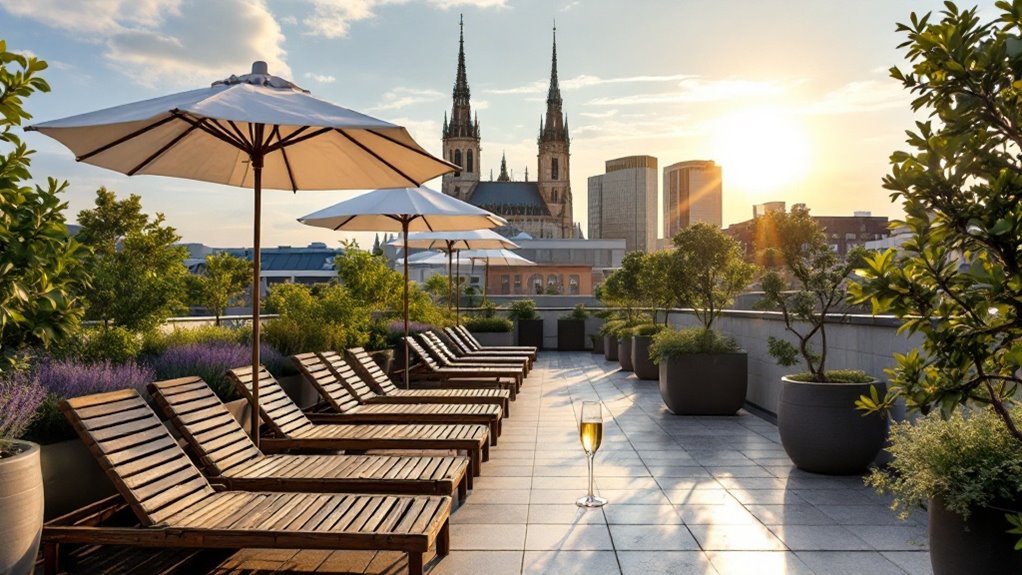
Rising above the bustling streets, Warsaw's rooftop gardens offer peaceful sanctuaries where you can discover stunning views of Poland's capital.
The University Library's one-hectare garden distinguishes itself as Europe's largest, featuring green walls adorned with mathematical formulas and musical scores. Agricultural architect Irena Bajerska masterfully designed this elevated oasis.
You'll find plenty of spots to unwind while taking in panoramic cityscapes.
Head to Ether Rooftop Bar for weekday serenity, or visit Panorama Sky Bar on the 40th floor for dramatic views of the Palace of Culture and Science.
The Barceló's rooftop pool lets you swim while gazing at the National Stadium and Vistula River.
For the best experience, time your visit during sunset when the city glows golden.
Just remember seasonal hours – gardens close earlier in winter, though hotel venues like The Roof stay open year-round.
Standing as a powerful tribute to Polish valor, Warsaw's Tomb of the Unknown Soldier draws visitors to its eternal flame and haunting colonnade – all that remains of the once-grand Saxon Palace.
Amidst Warsaw's ruins, a timeless colonnade guards Poland's fallen heroes, its eternal flame burning bright in remembrance.
You'll witness the solemn hourly changing of the guard and can pay your respects at this sacred memorial that's survived wars, occupations, and censorship since 1925. Like many similar monuments worldwide, the tomb features an eternal flame that burns continuously as a symbol of remembrance.
The tomb carries deep significance for Poland's national identity:
You will discover that Warsaw's a city that stays with you long after you've left. From its rebuilt Old Town to modern rooftop bars, it's packed with surprises at every turn. Whether you're diving into history at the Palace of Culture, sampling pierogi at local markets, or watching sunset from a garden terrace, Warsaw's mix of old and new creates an unforgettable experience. It's time you discovered this remarkable city for yourself.